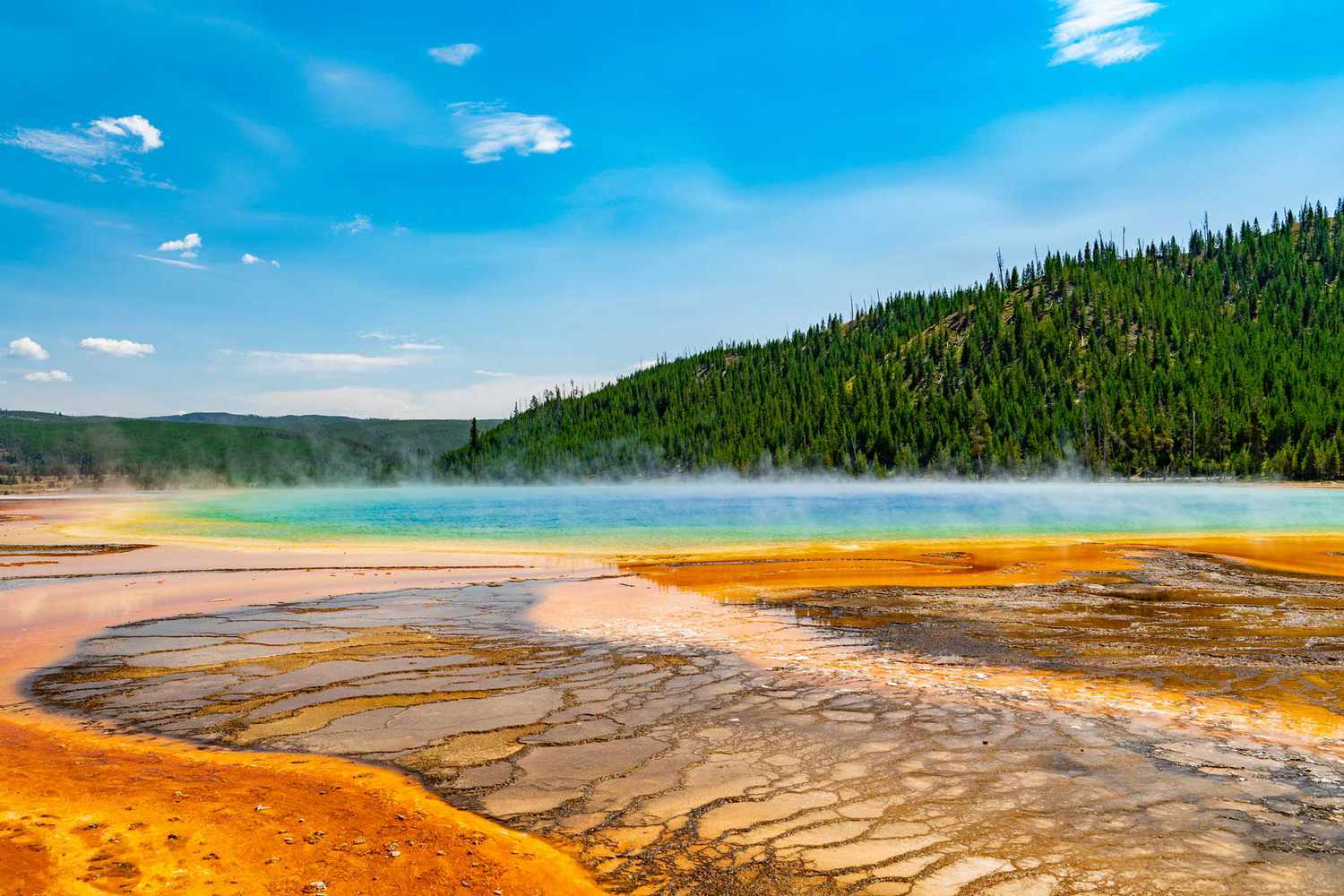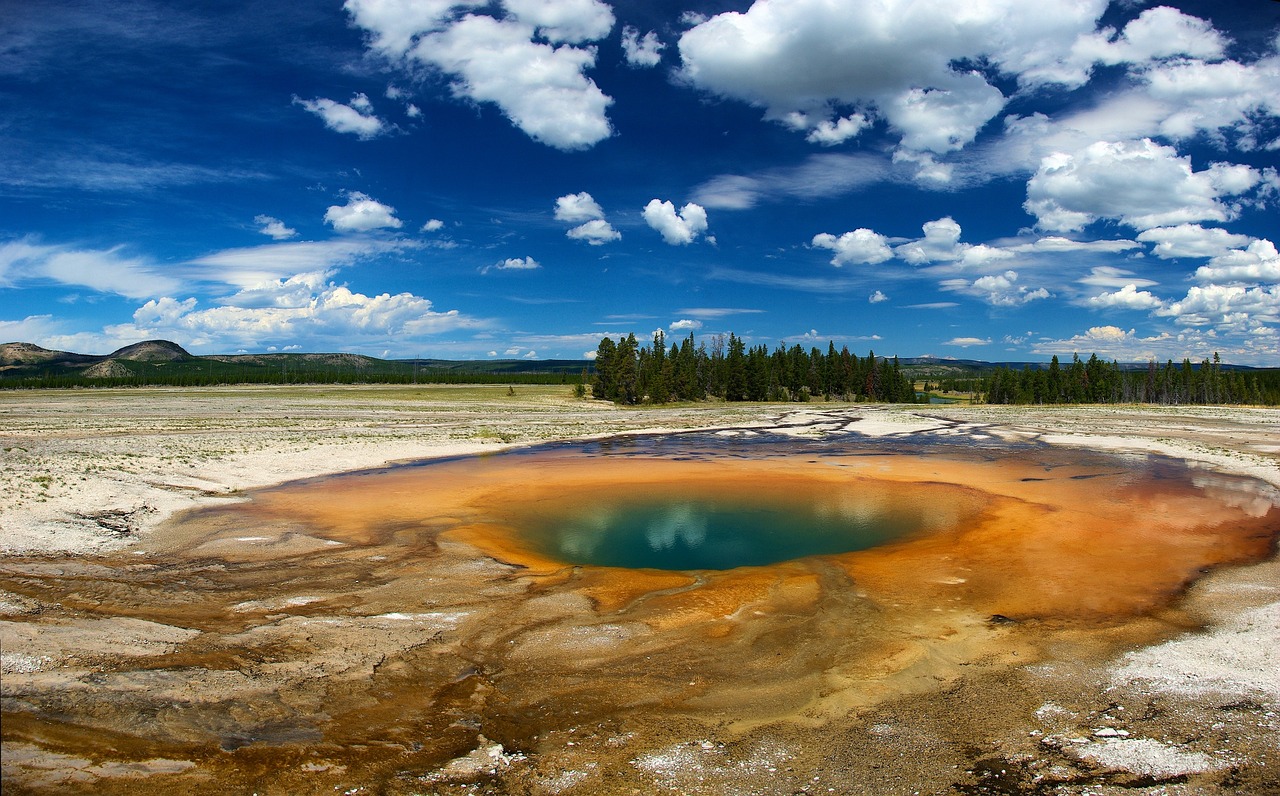Introduction
Yellowstone National Park is a breathtaking natural wonder located primarily in Wyoming, extending into Montana and Idaho. As the first national park in the world, established in 1872, it holds a special place in the hearts of nature lovers and adventure seekers. Known for its stunning landscapes, geothermal features, and rich biodiversity, Yellowstone offers an unparalleled experience for visitors of all ages.
History of Yellowstone National Park
The story of Yellowstone began with its establishment as the world’s first national park on March 1, 1872. This groundbreaking decision aimed to preserve the area’s unique geothermal features and natural beauty for future generations. Over the years, Yellowstone has witnessed significant historical events, including early explorations by figures like John Colter and the Washburn-Langford-Doane Expedition of 1870, which played a crucial role in its recognition as a national treasure.

Geography and Geology
Yellowstone National Park spans over 2.2 million acres, making it larger than the states of Rhode Island and Delaware combined. Its vast landscapes encompass forests, mountains, lakes, and rivers. One of the park’s most remarkable features is the Yellowstone Caldera, a massive volcanic crater formed by a supervolcanic eruption approximately 640,000 years ago. The caldera is the reason behind the park’s numerous geothermal phenomena, including geysers, hot springs, and fumaroles.
Climate and Weather
Yellowstone experiences a diverse climate, with temperatures varying significantly across seasons. Summers are typically warm and dry, making it the most popular time for visitors. Winters, on the other hand, are cold and snowy, transforming the park into a winter wonderland perfect for snow sports. Spring and fall offer milder weather and fewer crowds, ideal for those seeking a more tranquil experience.
Flora and Fauna
Yellowstone’s ecosystems are incredibly diverse, home to a wide range of plant and animal species. The park’s flora includes lush forests of lodgepole pine, Engelmann spruce, and subalpine fir. Wildflowers like the Yellowstone sand verbena add splashes of color to the landscape. Yellowstone is also a sanctuary for wildlife, including iconic species such as grizzly bears, wolves, bison, and elk. Conservation efforts have helped protect endangered species like the gray wolf and the Yellowstone cutthroat trout.
Major Attractions
Yellowstone is famed for its iconic attractions that draw millions of visitors each year:
- Old Faithful: Perhaps the most famous geyser in the world, Old Faithful erupts predictably, shooting water up to 185 feet into the air.
- Grand Prismatic Spring: The largest hot spring in the United States, renowned for its vibrant colors caused by microbial mats that thrive in the mineral-rich water.
- Yellowstone Lake: The largest high-elevation lake in North America, offering stunning views and recreational opportunities.
Geysers and Hot Springs

The park’s geothermal features are a testament to the volcanic activity beneath its surface. With over 10,000 thermal features, including geysers, hot springs, mud pots, and fumaroles, Yellowstone is a geothermal wonderland. Notable geysers include Steamboat Geyser, the world’s tallest active geyser, and Castle Geyser, known for its cone shape and powerful eruptions.
Waterfalls and Rivers
Yellowstone’s waterways are equally spectacular. The Yellowstone River is the park’s primary watercourse, carving through the landscape to create dramatic features like the Grand Canyon of the Yellowstone. Notable waterfalls include the Lower Falls, which plunges 308 feet, and the picturesque Mystic Falls.
Trails and Hiking
Hiking in Yellowstone offers a chance to explore its diverse terrains and witness its natural beauty up close. Popular trails include the Fairy Falls Trail, which leads to one of the park’s tallest waterfalls, and the Lamar Valley Trail, ideal for wildlife viewing. Hikers are advised to carry bear spray, stay on designated trails, and be prepared for changing weather conditions.
Camping and Lodging
Yellowstone provides a range of accommodation options to suit different preferences. There are 12 campgrounds with over 2,000 campsites, catering to both tent and RV campers. For those seeking more comfort, the park offers lodges like the historic Old Faithful Inn and Lake Yellowstone Hotel, providing a blend of rustic charm and modern amenities.
Activities and Recreation
From fishing in pristine rivers to boating on Yellowstone Lake, the park offers countless recreational activities. Wildlife watching is a highlight, with opportunities to see bison, elk, and possibly even a grizzly bear. In winter, visitors can enjoy snowshoeing, cross-country skiing, and snowmobile tours, making Yellowstone a year-round destination.
Conservation and Preservation
Yellowstone’s status as a protected area has enabled significant conservation efforts. The park faces challenges such as managing visitor impact, mitigating climate change effects, and preserving its natural resources. Organizations like the Yellowstone Park Foundation work tirelessly to support these efforts, ensuring the park remains a sanctuary for future generations.
Visitor Information
Before embarking on a Yellowstone adventure, it’s important to be aware of essential visitor information:
- Entrance Fees and Passes: The park charges an entrance fee, with various passes available, including annual passes.
- Park Regulations and Safety Tips: Visitors should follow park regulations, stay on marked trails, and maintain a safe distance from wildlife. Bear spray is recommended for hikers.
Nearby Attractions
Yellowstone’s proximity to other natural wonders makes it an excellent addition to a larger itinerary:
- Grand Teton National Park: Located just south of Yellowstone, it offers stunning mountain scenery and additional outdoor activities.
- Other Points of Interest: Sites like the Beartooth Highway and Cody, Wyoming, provide more opportunities for exploration and adventure.
Conclusion
Yellowstone National Park is a treasure trove of natural wonders, from its geothermal marvels to its diverse wildlife. Whether you’re an avid hiker, a wildlife enthusiast, or simply someone seeking to experience the beauty of nature, Yellowstone offers something for everyone. Plan your visit, respect the park’s guidelines, and immerse yourself in the unparalleled beauty of this iconic destination.
FAQs
Q1. What is the best time to visit Yellowstone?
The best time to visit Yellowstone is during the summer months (June to August) when the weather is warm and most park facilities are open. However, spring and fall offer fewer crowds and unique seasonal beauty.
Q2. How do I get to Yellowstone National Park?
Yellowstone has five entrances, with the most popular being the West Entrance near West Yellowstone, Montana. The park is accessible by car, and nearby airports include Jackson Hole Airport and Bozeman Yellowstone International Airport.
Q3. Are there any dangerous animals in the park?
Yes, Yellowstone is home to potentially dangerous wildlife, including grizzly bears, black bears, bison, and wolves. Visitors should maintain a safe distance from all animals and carry bear spray when hiking.
Q4. Can I swim in the hot springs?
No, swimming in Yellowstone’s hot springs is prohibited due to extremely high temperatures and harmful bacteria. However, visitors can swim in designated areas like the Boiling River and Firehole River.
Q5. What should I bring when visiting Yellowstone?
Essential items include layered clothing for varying weather, sturdy hiking boots, bear spray, a map, plenty of water, and a camera to capture the park’s stunning landscapes.



